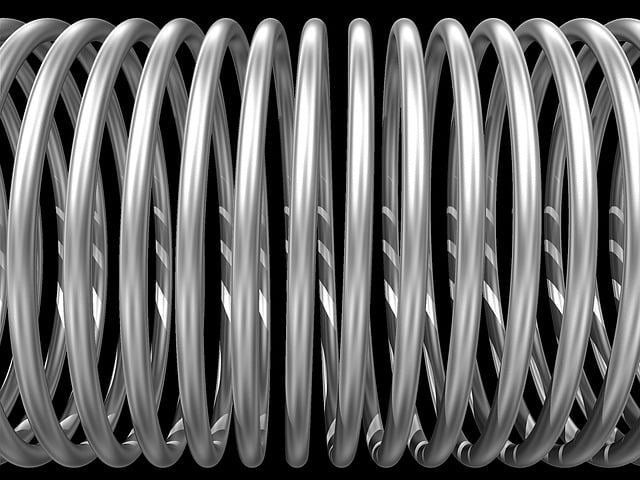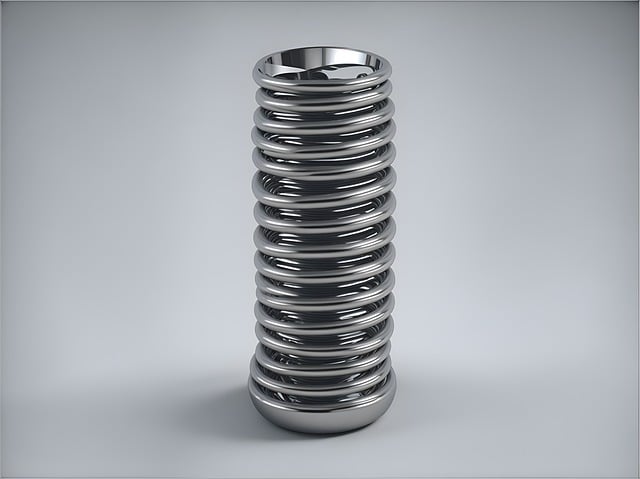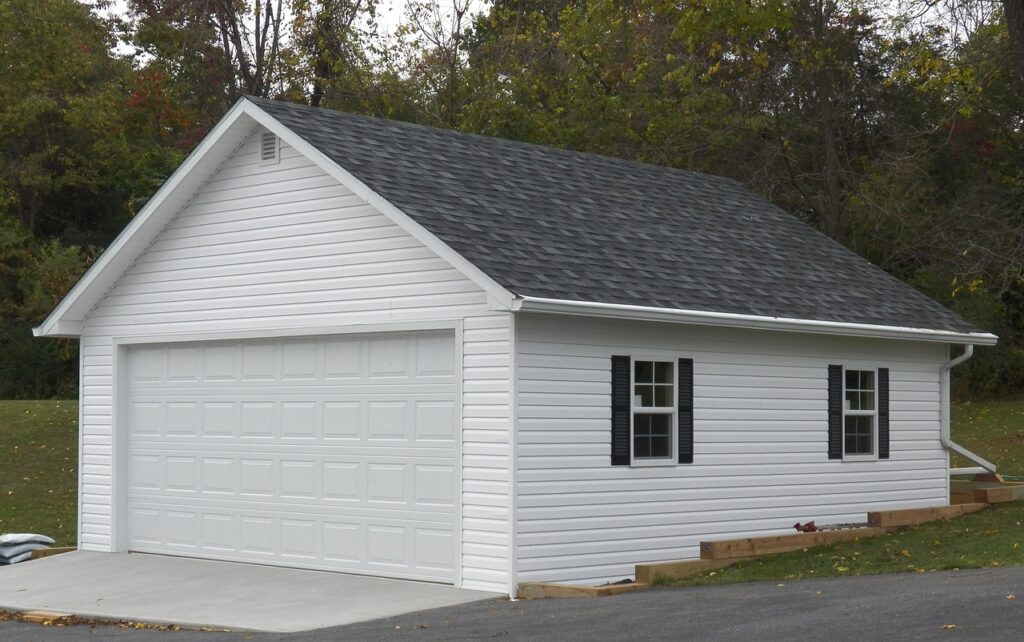Garage Door Spring Essentials: Care, Costs, and Choices
Why is the Garage Door Spring Essential?
The heart of any mechanism often lies unseen. Similarly, nestled within the intricate framework of a garage door system is the indispensable garage door spring. Its role is pivotal for a multitude of reasons:
Counterbalancing the Door’s Weight: Think of the spring as the bicep of your garage door system. Without it, lifting the door manually would require Herculean strength. The spring offsets the door’s weight, ensuring that both manual and automatic operations happen with minimal effort.
Enhancing the Door’s Lifespan: Without the spring’s counterbalancing effect, the door would slam shut or be hard to open, causing wear and tear. With the spring in place, the door moves smoothly, preserving its longevity and functionality.
Safety Measures: Garage door springs prevent the door from slamming shut, especially if there’s a malfunction. Imagine the potential hazards if a heavy door were to come crashing down without any checks in place!
Optimizing Energy Consumption: For those with automatic garage door openers, the spring plays a crucial role in energy efficiency. It ensures that the motor doesn’t overwork, hence consuming less power during operations.
Types of Garage Door Springs
Understanding the kind of springs out there can make a world of difference in choosing what’s right for your garage.
Torsion Springs
Positioning: Situated horizontally above the garage door when it’s closed.
Mechanism: These springs operate on torque. When the door is maneuvered, the springs wind up, storing energy. When the door is released, this energy is used to help lift the door up.
Lifespan: Torsion springs generally have a longer lifespan than their counterparts. Depending on usage, they can last anywhere from 7 to 12 years.
Suitability: Ideal for heavier doors due to their sturdiness and durability.
Check Amazon: Garage Door Torsion Springs 2” (Pair) with Non-Slip Winding Bars
Extension Springs
Positioning: These are mounted on either side of the garage door, running parallel to the horizontal tracks.
Mechanism: As the name suggests, these springs extend (or stretch) to store energy when the door is moved. This stored energy aids in lifting the door.
Lifespan: While they’re durable, extension springs typically have a shorter lifespan than torsion springs, often between 5 to 8 years.
Suitability: They’re usually recommended for lighter doors and are often more budget-friendly than torsion springs.
Check Amazon: Garage Door Extension Spring for 7′ High Door, 120 Pounds

Signs Your Garage Door Spring Needs Attention
A garage door spring, despite its strength and durability, isn’t immune to wear and tear. Over time, it can start showing signs of fatigue. Recognizing these early signs can save you from larger issues, potential dangers, and even costlier repairs down the line.
Uneven Door Movement
What is it? It’s when one side of the garage door seems to move faster or lag behind the other side during opening or closing.
What causes it? An uneven door movement can be the result of a spring that’s worn out more on one side than the other. The discrepancy in tension between the two sides causes the door to move unevenly.
Why should you care? Besides being aesthetically displeasing, uneven movement can strain the door’s other components, leading to further damage. It also poses a safety risk as the door might become unstable and fall.
Noticeable Gap in the Spring
What is it? When looking at your torsion spring, you might see a clear gap or space somewhere in its coil.
What causes it? This gap is a clear indicator that the spring has snapped or broken at that point. Springs break due to wear and tear, rust, or just the natural life cycle of the component.
Why should you care? A broken spring can render your garage door immobile. The risk is even greater if the door is in motion when the spring snaps, potentially causing injury or damage.
Slow or No Door Movement
What is it? When you try to open or close your garage door, it either moves sluggishly or doesn’t move at all.
What causes it? A garage door that’s slow to move or stuck often points to a spring that’s lost its tension. It might not have enough strength left to counterbalance the door’s weight.
Why should you care? Slow-moving doors can strain the motor of automatic openers, leading to increased wear and potentially shortening the motor’s life. A door that doesn’t move at all, on the other hand, can be a major inconvenience.
Dangers of DIY Repairs
While there’s a sense of accomplishment in rolling up our sleeves and tackling projects on our own, some tasks are best left to the professionals. Repairing garage door springs is one of those tasks, and here’s why:
High Tension, High Risk: Garage door springs are under immense tension. This tension is what allows them to lift and lower heavy garage doors with ease. But when they snap or are mishandled, it might break down with dangerous force. This poses a risk of severe injury to an inexperienced DIYer.
Misdiagnosis: Without proper knowledge, you might misdiagnose the actual problem. You could spend time and money fixing the wrong thing, only to have the real issue persist or even worsen.
Potential for Further Damage: One wrong move can not only harm the spring but also damage other parts of the garage door system. This could lead to more extensive repairs and higher costs in the long run.
Warranty Woes: Some garage door components come with warranties that can become void if non-professionals tamper with them. By trying a DIY fix, you might inadvertently lose out on a warranty claim if things go south.
Lack of Safety Gear: Professionals have access to and use the necessary safety gear while working on garage door springs. The average homeowner might not have these protective measures, increasing the risk of injury.
Balancing Act: Even if you manage to replace the spring, ensuring that the door is properly balanced is another challenge. An improperly balanced door can lead to premature wear and tear on the opener and other components.

How Often Should You Replace Your Spring?
The frequency with which you should replace your garage door spring largely depends on its type, usage, and the conditions it operates under.
Lifespan in Cycles: Typically, garage door springs are rated in cycles, with one cycle being the garage door opening and closing once. A standard garage door spring might be rated for about 10,000 cycles. If you use your garage twice a day, that’s roughly 14 years. But if you’re in and out four times daily, that lifespan gets halved.
Torsion vs. Extension Springs: As previously mentioned, torsion springs generally last longer, often between 7 to 12 years (or more, depending on usage). Extension springs, on the other hand, might need replacing every 5 to 8 years.
Environmental Factors: Harsh climates, particularly those with drastic temperature fluctuations, can affect the longevity of your spring. Moisture, too, can introduce rust, which weakens the spring and shortens its lifespan.
Regular Maintenance: Like any machinery, regular check-ups and maintenance can extend the life of garage door springs. However, no spring is immortal, and even with impeccable care, it will need replacing eventually.
Tips for Maintaining Your Garage Door Spring
To keep your spring singing and your door dancing smoothly, consider these maintenance tips:
1. Lubricate Regularly: Use a silicone-based lubricant to keep the spring well-oiled. This reduces friction, prevents rust, and ensures the spring operates smoothly.
2. Check for Balance: Disconnect the opener by pulling the release handle and manually move the door halfway up. If it doesn’t stay put, the springs might be improperly balanced.
3. Regular Inspection: Keep an eye out for signs of wear and tear. This includes gaps in torsion springs, uneven door movement, or any unusual noises when operating.
4. Protect Against Rust: As mentioned, rust can be a spring’s nemesis. Keep your garage well ventilated, and consider using rust-preventative sprays.
5. Avoid DIY Adjustments: While maintenance is encouraged, trying to adjust or repair the spring on your own can be dangerous and may exacerbate issues.

Costs Associated With Spring Replacement
The cost of replacing a garage door spring can vary widely based on several factors:
Type of Spring: Torsion springs generally cost more than extension springs. This is due to their durability and longer lifespan.
Labor Costs: Even if the spring itself isn’t exorbitantly priced, labor can contribute significantly to the overall cost. This usually depends on the complexity of the job and the rates of the professionals in your area.
Quality of the Spring: Like most things, there’s a range of quality with springs. Higher-end springs might cost more initially but could save money in the long run due to their extended lifespans.
Additional Repairs: Sometimes, other parts of the garage door mechanism might need fixing or replacement along with the spring, adding to the total cost.
Geographical Location: The cost can also vary depending on your location. Urban areas or regions with a higher cost of living might have steeper prices for both parts and labor.
Service Call Fees: Some professionals might charge a service fee just to come out and diagnose the issue.
Warranty Options: If you opt for a spring with an extended warranty, the upfront cost might be higher.
Choosing the Right Spring for Your Garage Door
1. Understand Your Door’s Weight: Heavier doors will require springs that can handle more tension, typically steering you towards torsion springs.
2. Determine Your Usage: If your garage door sees a lot of action throughout the day, investing in a high-cycle spring might be worth the extra cost.
3. Know the Size: Measure the length, diameter, and wire size of your current spring. This will be crucial in finding a suitable replacement.
4. Balance Quality with Budget: While it might be tempting to opt for the cheapest option, remember that a quality spring can save you money and hassle in the long run by reducing the frequency of replacements.
5. Consult with Professionals: Before making a decision, it’s always a good idea to consult with a garage door specialist. They can provide insights tailored to your specific situation.
6. Think Long-Term: Consider purchasing springs with rust prevention or opting for corrosion-resistant materials, especially if you live in humid or coastal areas.
Conclusion
Ensuring the smooth operation of the garage door, the garage door spring bears significant weight and responsibility, quite literally. However, like all things, they have their own lifespan and cues to indicate when they need attention.
Understanding the intricacies of your garage door spring, from its important role to the costs associated with its replacement, allows homeowners to make informed decisions. Remember, while upfront costs for quality springs and professional installation might seem steep, the longer lifespan, reduced need for frequent replacements, and peace of mind they provide often outweigh these initial expenses. With a bit of research, consultation with professionals, and understanding of your own garage door usage, you can easily navigate this landscape.
FAQs
1. Why is my garage door spring essential?
The garage door spring plays a crucial role in counterbalancing the weight of the door. It ensures smooth, controlled, and safe opening and closing. Without a functioning spring, your door can become too heavy to operate, posing risks of damage or injury.
2. How can I tell if my garage door spring is damaged or broken?
Some tell-tale signs include uneven door movement, a visible gap in the spring, slow or unresponsive door movement, and loud snapping sounds. If your garage door isn’t opening but the opener is working, it might be due to a broken spring.
3. Is it safe to repair or replace the garage door spring myself?
It’s advisable to seek professional help when dealing with garage door springs. They’re under high tension, and mishandling can lead to injuries. Professionals have the necessary tools and knowledge to handle the task safely.
4. How often should I replace my garage door spring?
The typical lifespan of a standard garage door spring is around 10,000 cycles, with one cycle being the door opening and closing once. Depending on your usage, this can translate to anywhere between 7 to 14 years. However, factors like the type of spring, environmental conditions, and maintenance can affect its longevity.
5. What factors influence the cost of garage door spring replacement?
The type of spring (torsion or extension), its quality, labor costs, geographical location, and any additional repairs or parts needed will influence the overall cost of replacement. It’s a good idea to get a few quotes to understand the price range in your area.




